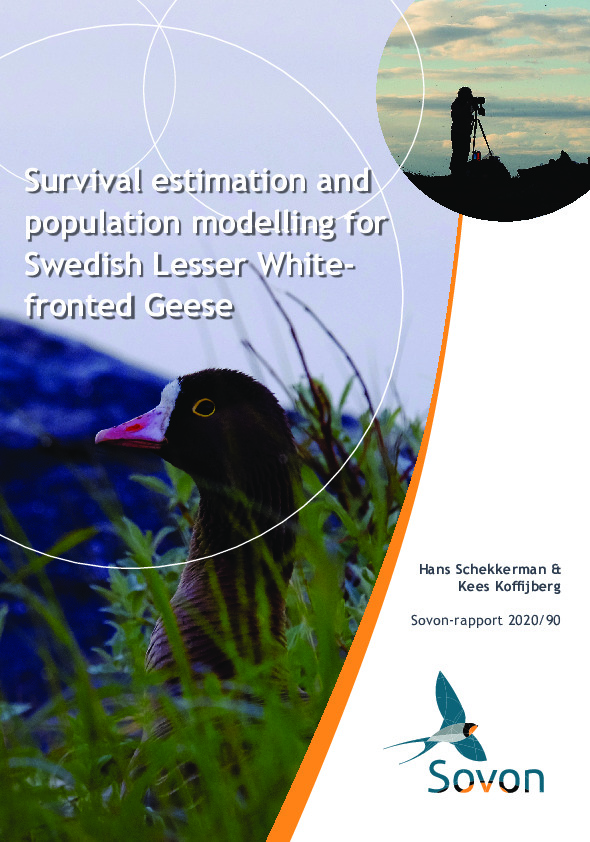RapportAnnual survival estimation and population modelling for Swedish Lesser White-fronted Geese

The Lesser White-fronted Goose Anser erythropus (hereafter LWfG) is a small, migratory, Arctic-nesting goose that occupies a breeding range from Scandinavia eastward to Chukotka in eastern Siberia. During the 19th and 20th centuries, the species underwent a massive population decline across all parts of its range. In Scandinavia, nowadays essentially just two small subpopulations remain, one in northern Norway and one in Swedish Lapland (county of Norrbotten). Since the early 1980s, the Swedish breeding population has been reinforced by ‘Projekt Fjällgås’ of the Svenska Jägareförbundet and foundation Nordens Ark, by releasing captive-bred young birds. Until the year 2000 this was carried out with Barnacle Goose foster parents and from 2010 onwards by releasing groups of young birds on the breeding grounds just before they are able to fly (von Essen 1991, Andersson & Holmqvist 2010, Andersson 2016). The foster-parenting approach resulted in the population establishing new migration habits with wintering areas concentrated in The Netherlands.
Both in the 1980s-1990s and after 2010, released birds have been individually marked with colour rings, as were a small number of wild-born birds captured outside the breeding season around 2010. A database containing all ringing data and resightings has been set up to enable analyses of the fates and demography of birds from this project. In 2018, the resightings were analysed in order to obtain estimates of annual (apparent) survival of released birds in this population, in both the ‘old’ (1984-2003) and the ‘new’ introduction periods (2012-2018) (Schekkerman & Koffijberg 2019).
In this report, survival estimates for the ‘new’ period after 2010 are updated using an additional year of resighting data (2018-2019). In addition, these updated estimates are combined in a population model with data on the reproduction of free-living LWfG of this population and on the numbers of young birds released in the breeding area, to explore what population development can be expected given the current demographics, and how important the reinforcement with captive-bred young is to the population.
- Uitgever
- Sovon Vogelonderzoek Nederland
- Rapportnr
- 2020/90